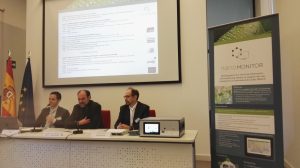The Life NanoMONITOR Project is in its final weeks and has shared its results at a concluding conference in Valencia, 29th November, including the development of two databases on the concentration of nanomaterials and five prototype stations for the characterisation and detection of nanoparticles.

Titled ‘New Solutions to Support the Sampling, Monitoring and Analysis of the Concentration of Nanomaterials in Workplaces and Urban Areas’, the final Conference was a forum for nanotechnology experts from industry, academia and policy making to discuss nanotechnology safety, the use of measured data on the concentration of engineered nanomaterials (ENMs) to support risk assessment, the implementation of safe exposure scenarios, and its regulatory challenges. The event was hosted by the members of the NanoMONITOR consortium.
The event showcased the main progress and outcomes of the LIFE NanoMONITOR project, which provides scientific based solutions to support the risk assessment of nanomaterials on a regulatory basis, including critical issues such as environmental, occupational and consumer exposure to ENMs, environmental release and fate in the life cycle and product value chains, and human health impacts of ENMs.
The main results and outcomes of the projects are:
- The development of a data base about the concentration of nanomaterials in different environments including urban environments, industrial environments, and what we call clean environments, rural areas.
- The development of five prototype stations for the characterisation and detection of nanoparticles in all environments that are relevant for human health.
- A data base describing concentrations to meet the obligations of REACH, with the goal of characterising the maximum environmental concentrations of nanoparticles.
Carlos Fito, Project Coordinator and ITENE´s expert explained: “The project results have three major impacts: on society; on industry and on the environment. For society, the project has contributed to improving the knowledge about the concentration of what we call nano-polluting particles in the environment. These are extremely relevant to people who live in cities polluted by traffic. The project has impact also to industry: the new low-cost prototype station that can be used by businesses to characterise in real time the number of particles per cubic centimetre and mass that are inside the company. Finally, the project contributes to reducing the environmental impacts of nanomaterials by developing best practice protocols and guidelines for the sampling for these nano-polluting particles in both urban air and other compartments such as water, soil and sediment and hence improving the sparse information currently available”, Carlos Fito described.
To train attendees on the use of the tools developed within NanoMonitor, the project will host a Free Training Webinar on New Tools to Support the Sampling, Monitoring and Analysis of the Concentration of Nanomaterials in Workplaces and Urban Areas on December 13. The webinar is targeted at Health and safety advisors, Occupational hygienists, Workers and professional users who use ENMs as such, in mixtures or incorporated into articles in research or production processes as well as researchers, Experts from industry associations and other stakeholder organizations informing companies about the requirements for the safe handling and use of ENMs on a regulatory basis. To find out more and to register go to: http://www.lifenanomonitor.eu/en/events/nanomonitor-training-webinar/
